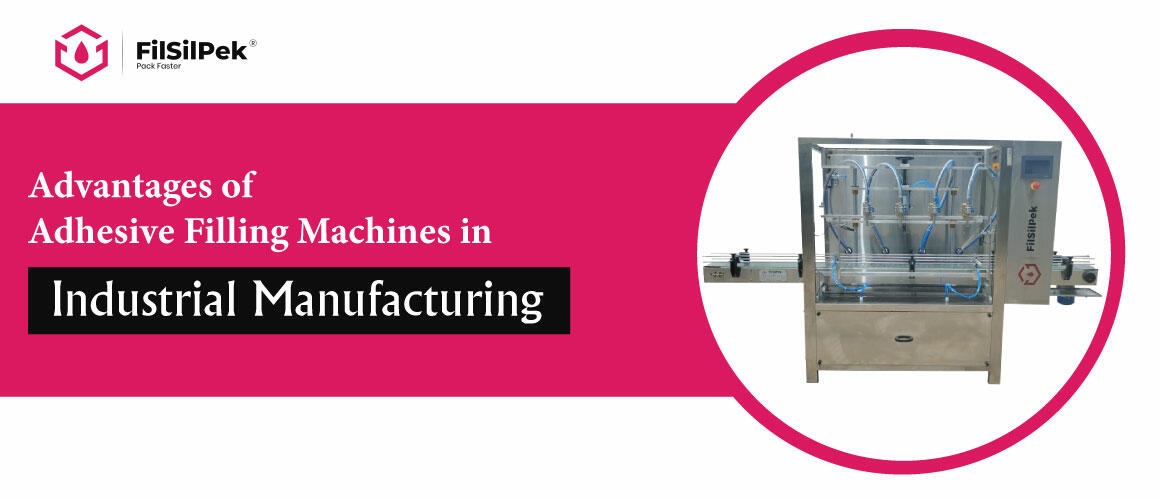Advantages of Adhesive Filling Machines in Industrial Manufacturing
In the industrial manufacturing, the deployment of cutting-edge technologies is paramount for achieving operational excellence.
This article meticulously examines the multifaceted advantages of integrating adhesive filling machines into manufacturing setups, emphasizing the industry-specific benefits that contribute to heightened efficiency and accuracy.
Let’s check it out quick.
Understanding Adhesive Filling Machines: A Technical Overview
Adhesive filling machines are specialized industrial equipment designed for the precise and automated dispensing of adhesives across diverse manufacturing sectors. Operating on advanced principles of fluid dynamics and automation, these machines ensure the controlled application of adhesives in various forms, ranging from liquids to pastes.
Core Components:
The fundamental components of adhesive filling machines include:
1. Reservoirs and Hoppers: Adhesive reservoirs or hoppers store the adhesive material and facilitate a consistent flow during the dispensing process. These reservoirs are often equipped with mechanisms to maintain the adhesive at optimal viscosity.
2. Dispensing Nozzles and Valves:Precision dispensing is achieved through specialized nozzles and valves that control the flow of adhesive. These components are designed to accommodate different viscosities and ensure accurate application.
3. Pumps and Motors: Adhesive filling machines employ pumps and motors to regulate the movement of adhesive from the reservoir to the dispensing point. This mechanism enables a controlled and uniform flow, crucial for achieving precision in application.
4. Control Systems:Central to the functionality of adhesive filling machines are sophisticated control systems. These systems govern parameters such as dispensing speed, volume, and pressure, ensuring consistency and reliability in the adhesive application process.
Operational Principles:
Adhesive filling machines operate on principles tailored to the specific requirements of industrial applications. The key operational aspects include:
1. Positive Displacement or Piston Filling:This method involves the use of pistons to displace adhesive from the reservoir, ensuring precise volumetric control. It is suitable for applications where accuracy in dosage is critical.
2.Gravity Filling:Gravity-based filling relies on the force of gravity to move adhesive from the reservoir to the dispensing point. Ideal for free-flowing adhesives, this method is simple and effective.
3. Pressure or Pump Filling:Utilizing pumps, this method applies pressure to push adhesive through the dispensing system. It is particularly advantageous for high-viscosity adhesives and applications requiring a consistent flow.
7 Benefits of Adheshive Filling Machines in Industrial Efficiency
Micro-Dosing Capabilities:
Adhesive filling machines excel in micro-dosing applications, allowing for the precise application of adhesives in quantities as small as microliters. This capability is particularly advantageous in industries such as electronics and microelectronics manufacturing, where minute amounts of adhesive must be dispensed with extreme precision.
High-Speed Dispensing for Mass Production:
The inherent design of adhesive filling machines facilitates high-speed dispensing, making them ideal for mass production scenarios. This advantage is particularly noteworthy in industries such as automotive manufacturing, where the rapid assembly of components demands a seamless and expeditious adhesive application process.
Material Compatibility and Viscosity Control:
Adhesive filling machines offer advanced features for handling a spectrum of adhesives with varying viscosities. This capability proves invaluable in industries like aerospace, where the diversity of materials and adhesive formulations necessitates equipment that can adeptly manage and dispense a wide range of viscosities.
Integration with Industry 4.0 Technologies:
Industry 4.0 is transforming manufacturing through the integration of smart technologies. Adhesive filling machines, when equipped with IoT sensors and connectivity options, seamlessly integrate into smart manufacturing environments. This connectivity enables real-time monitoring, data analytics, and predictive maintenance, fostering an intelligent and data-driven production ecosystem.
Cleanroom Compatibility:
In industries such as pharmaceuticals and semiconductor manufacturing, where adherence to stringent cleanliness standards is non-negotiable, adhesive filling machines offer cleanroom compatibility. These machines are designed to operate within controlled environments, ensuring that the adhesive application process remains free from contaminants.
Automated Quality Control Mechanisms:
Adhesive filling machines equipped with vision systems and automated quality control mechanisms contribute to the precision and consistency of adhesive application. This is particularly critical in industries like medical device manufacturing, where stringent quality standards must be maintained to ensure the reliability and safety of the final products.
Quick Changeover for Diverse Production Requirements:
Industries characterized by diverse product lines, such as consumer goods manufacturing, benefit from the quick changeover capabilities of adhesive filling machines. Rapid adaptation to varying adhesive types and dispensing parameters allows manufacturers to efficiently transition between different production requirements without prolonged downtime.
Conclusion
The integration of adhesive filling machines into industrial manufacturing processes is a strategic imperative, especially when considering the unique advantages tailored to specific industries. From micro-dosing in electronics to cleanroom compatibility in pharmaceuticals, these machines contribute significantly to the optimization of production processes, elevating efficiency and ensuring the highest standards of quality.
Want to know more how these adhesive filling machines can do wonders in your business? – Connect with our experts now or write us at [email protected]
A Quick Guide on Automatic Adhesive Filling Machine
Have you ever wondered how some manufacturing industries consistently produce high-quality products while others struggle with defects and…

